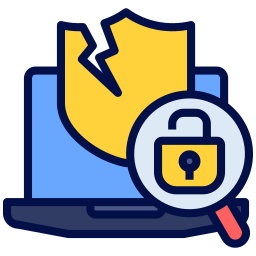
Capcom Company Cyber Security Posture
capcom.comCapcom began in Japan in 1979 as a manufacturer and distributor of electronic game machines. In 1983 Capcom Co., Ltd was founded and soon built a reputation for introducing cutting-edge technology and software to the video game market. Now an industry leader in the video game industry for 25 years, Capcom's legacy of historic franchises in home and arcade gaming are testaments to an unparalleled commitment to excellence. Building on its origins as a game machine manufacturer, Capcom is now involved in all areas of the video game industry and has offices in Tokyo, Osaka, California, England, Germany and Hong Kong.
Capcom Company Details
capcom
1112 employees
111375.0
none
Computer Games
capcom.com
Scan still pending
CAP_8665354
In-progress
Between 200 and 800
This score is AI-generated and less favored by cyber insurers, who prefer the TPRM score.
 Capcom Global Score
Capcom Global Score.png)

Capcom Company Scoring based on AI Models
| Model Name | Date | Description | Current Score Difference | Score |
|---|---|---|---|---|
| AVERAGE-Industry | 03-12-2025 | This score represents the average cybersecurity rating of companies already scanned within the same industry. It provides a benchmark to compare an individual company's security posture against its industry peers. | N/A | Between 200 and 800 |
Capcom Company Cyber Security News & History
| Entity | Type | Severity | Impact | Seen | Url ID | Details | View |
|---|---|---|---|---|---|---|---|
| Capcom U.S.A., Inc. | Breach | 50 | 2 | 11/2020 | CAP125072625 | Link | |
Rankiteo Explanation : Attack limited on finance or reputationDescription: The California Office of the Attorney General reported that Capcom U.S.A., Inc. experienced a data breach on November 1, 2020. The breach involved unauthorized access to certain files containing personal information, with the specific types of information affected not detailed, and approximately UNKN individuals were impacted. The breach was reported on March 24, 2021. | |||||||
| Capcom | Cyber Attack | 90 | 5 | 11/2020 | CAP221615222 | Link | |
Rankiteo Explanation : Attack threatening the organization's existenceDescription: A malicious hacker had the access to Japanese game developer Capcom's internal systems in a cyber attack in November 2020. The company had to shut down some of its systems to contain the attack but chances are that other sensitive data such as intellectual property, or details of the firm’s plans for future video game releases might have stolen. Capcom confirmed that no customer information was breached in the attack. | |||||||
Capcom Company Subsidiaries

Capcom began in Japan in 1979 as a manufacturer and distributor of electronic game machines. In 1983 Capcom Co., Ltd was founded and soon built a reputation for introducing cutting-edge technology and software to the video game market. Now an industry leader in the video game industry for 25 years, Capcom's legacy of historic franchises in home and arcade gaming are testaments to an unparalleled commitment to excellence. Building on its origins as a game machine manufacturer, Capcom is now involved in all areas of the video game industry and has offices in Tokyo, Osaka, California, England, Germany and Hong Kong.
Access Data Using Our API

Get company history
.png)
Capcom Cyber Security News
Steam data leak: what we know and how to protect your account
What do we actually know about the breach? The cybersecurity firm Underdark.ai first reported that a hacker named Machine1337 was selling Steam ...
Capcom suffers data breach
Japanese gaming giant Capcom has disclosed a data breach which led to unauthorized access of some files and systems.
Video game company Capcom details attack, data breach by ransomware gang Ragnar Locker
Capcom is calling the incident a “customized ransomware attack” that targeted the company directly. It had reported the data breach in vague ...
The leading enterprise cybersecurity companies 2021
What are the leading cybersecurity companies? Choosing the right vendor is crucial for success in mitigating cybersecurity risks.
5 Unfortunate Cyber Attacks Against Gaming Companies
Large scale cyberattacks, from hacks to DDoS attempts, can be debilitating to the receiving party- companies' private data and information ...
Hackers Target Videogame Publishers for Ransom, Source Code
Gamers have struggled for years with hackers who cheat and take over accounts. Now, videogame studios are coming under serious attack.
How remote work opened the floodgates to ransomware
Criminals have found an increasingly lucrative path in ransomware attacks, in which a hacker breaks into a company or government's network and ...
Capcom confirms Ragnar Locker ransomware attack, data exposure
Capcom has confirmed that a recent security incident was due to a Ragnar Locker ransomware infection, potentially leading to the exposure of customer records.
Dragon's Dogma 2: When Will We Get A Sequel?
2022 marks the 10-year anniversary of Capcom's action RPG "Dragon's Dogma." You might be more familiar with Netflix's "Dragon's Dogma" show ...

Capcom Similar Companies

Keywords Studios
We provide creative services to the global video games industry and beyond through our end-to-end platform, supercharged by our own technology. Our goal is to help you imagine more for your IP, bringing to life digital content that entertains, connects, and educates people worldwide. Established

Epic Games
Founded in 1991, Epic Games is a leading interactive entertainment company and provider of 3D engine technology. Epic operates Fortnite, one of the world’s largest games with over 350 million accounts and 2.5 billion friend connections. Epic also develops Unreal Engine, which powers the world’s lead

Ubisoft
Ubisoft’s 19,000 team members, working across more than 30 countries around the world, are bound by a common mission to enrich players’ lives with original and memorable gaming experiences. Their commitment and talent have brought to life many acclaimed franchises such as Assassin’s Creed, Far Cry,

Frequently Asked Questions
Explore insights on cybersecurity incidents, risk posture, and Rankiteo's assessments.
Capcom CyberSecurity History Information
How many cyber incidents has Capcom faced?
Total Incidents: According to Rankiteo, Capcom has faced 2 incidents in the past.
What types of cybersecurity incidents have occurred at Capcom?
Incident Types: The types of cybersecurity incidents that have occurred incidents Breach and Cyber Attack.
How does Capcom detect and respond to cybersecurity incidents?
Detection and Response: The company detects and responds to cybersecurity incidents through containment measures with Systems Shutdown.
Incident Details
Can you provide details on each incident?

Incident : Data Breach
Title: Capcom U.S.A., Inc. Data Breach
Description: The California Office of the Attorney General reported that Capcom U.S.A., Inc. experienced a data breach on November 1, 2020. The breach involved unauthorized access to certain files containing personal information, with the specific types of information affected not detailed, and approximately UNKN individuals were impacted. The breach was reported on March 24, 2021.
Date Detected: 2020-11-01
Date Publicly Disclosed: 2021-03-24
Type: Data Breach

Incident : Cyber Attack
Title: Capcom Cyber Attack
Description: A malicious hacker had access to Japanese game developer Capcom's internal systems in a cyber attack in November 2020. The company had to shut down some of its systems to contain the attack but chances are that other sensitive data such as intellectual property, or details of the firm’s plans for future video game releases might have stolen. Capcom confirmed that no customer information was breached in the attack.
Date Detected: November 2020
Type: Cyber Attack
Threat Actor: Malicious Hacker
Motivation: Intellectual Property Theft, Future Game Release Plans
What are the most common types of attacks the company has faced?
Common Attack Types: The most common types of attacks the company has faced is Breach.
Impact of the Incidents
What was the impact of each incident?

Incident : Data Breach CAP125072625
Data Compromised: Personal Information

Incident : Cyber Attack CAP221615222
Data Compromised: Intellectual Property, Future Game Release Plans
What types of data are most commonly compromised in incidents?
Commonly Compromised Data Types: The types of data most commonly compromised in incidents are Personal Information, Intellectual Property and Future Game Release Plans.
Which entities were affected by each incident?

Incident : Data Breach CAP125072625
Entity Type: Company
Industry: Gaming
Location: United States
Customers Affected: UNKN

Incident : Cyber Attack CAP221615222
Entity Type: Company
Industry: Gaming
Location: Japan
Customers Affected: None
Response to the Incidents
What measures were taken in response to each incident?

Incident : Cyber Attack CAP221615222
Containment Measures: Systems Shutdown
Data Breach Information
What type of data was compromised in each breach?

Incident : Data Breach CAP125072625
Type of Data Compromised: Personal Information
Number of Records Exposed: UNKN

Incident : Cyber Attack CAP221615222
Type of Data Compromised: Intellectual Property, Future Game Release Plans
How does the company handle incidents involving personally identifiable information (PII)?
Handling of PII Incidents: The company handles incidents involving personally identifiable information (PII) through was Systems Shutdown.
References
Where can I find more information about each incident?

Incident : Data Breach CAP125072625
Source: California Office of the Attorney General
Where can stakeholders find additional resources on cybersecurity best practices?
Additional Resources: Stakeholders can find additional resources on cybersecurity best practices at and Source: California Office of the Attorney General.
Additional Questions
General Information
Who was the attacking group in the last incident?
Last Attacking Group: The attacking group in the last incident was an Malicious Hacker.
Incident Details
What was the most recent incident detected?
Most Recent Incident Detected: The most recent incident detected was on 2020-11-01.
What was the most recent incident publicly disclosed?
Most Recent Incident Publicly Disclosed: The most recent incident publicly disclosed was on 2021-03-24.
Impact of the Incidents
What was the most significant data compromised in an incident?
Most Significant Data Compromised: The most significant data compromised in an incident were Personal Information, Intellectual Property and Future Game Release Plans.
Response to the Incidents
What containment measures were taken in the most recent incident?
Containment Measures in Most Recent Incident: The containment measures taken in the most recent incident was Systems Shutdown.
Data Breach Information
What was the most sensitive data compromised in a breach?
Most Sensitive Data Compromised: The most sensitive data compromised in a breach were Personal Information, Intellectual Property and Future Game Release Plans.
What was the number of records exposed in the most significant breach?
Number of Records Exposed in Most Significant Breach: The number of records exposed in the most significant breach was 0.
References
What is the most recent source of information about an incident?
Most Recent Source: The most recent source of information about an incident is California Office of the Attorney General.
What Do We Measure?
















Every week, Rankiteo analyzes billions of signals to give organizations a sharper, faster view of emerging risks. With deeper, more actionable intelligence at their fingertips, security teams can outpace threat actors, respond instantly to Zero-Day attacks, and dramatically shrink their risk exposure window.
These are some of the factors we use to calculate the overall score:
Identify exposed access points, detect misconfigured SSL certificates, and uncover vulnerabilities across the network infrastructure.
Gain visibility into the software components used within an organization to detect vulnerabilities, manage risk, and ensure supply chain security.
Monitor and manage all IT assets and their configurations to ensure accurate, real-time visibility across the company's technology environment.
Leverage real-time insights on active threats, malware campaigns, and emerging vulnerabilities to proactively defend against evolving cyberattacks.




